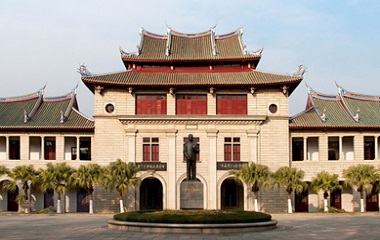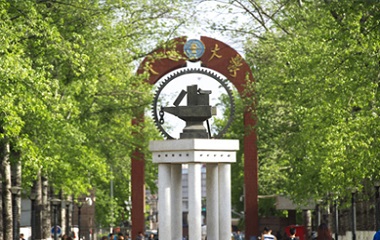[Republic of Türkiye] Narsap Idil Sumru, Beijing Normal University
Time comes softly and it goes quietly with the beauty of the past, like the petals of a flower kissed by a breeze and fluttering down with it. Time flies. Looking back, I can’t help feeling amazed that I have been studying in China for years. In my spare time, I love to go on unknown journeys all by myself to see the scenery of different places which brought me many wonderful memories.
It’s been two years since my trip to Chongqing back in 2019, but it seems like yesterday.

My first stop in Chongqing was the ancient town of Ciqikou, and I was most impressed by the “Chongqing hotpot” that could be found everywhere in this historic town. It was all around us in various ways, as if reminding people that hotpot was the mascot of Chongqing. It was the first time I set foot in Chongqing, a land with profound history and culture, but I had not expected that I would have the greatest connection with the “Chongqing hotpot”, and I am grateful that it gave me the opportunity to probe the mystery of the city.
After the first stop of my journey,I arrived at the Chongqing Culture Museum with great excitement. Being curious, I asked the staff there, “Could you please explain to me the culture and history of Chongqing, using the Chongqing hotpot as a perspective?” “Haha, you’re really making trouble for me. Of course.” The staff joked. He then led me to an old yellowish photograph which portrayed the lives and memories of generations. And I couldn’t help but immerse myself in it — the small boats travelling in the water, the wisps of smoke dancing in the wind, and the peddlers crying along the street... all across time and space hit the depth of my heart.

“Hey! I don’t see Chongqing hotpot in the photo.”
“Haha, don’t worry. Just leave a suspension first. Now let me tell you. The place you just set foot on is the ancient town of Ciqikou, which was originally called Longyin Town, and it is a famous historical and cultural street in China.”
“Is there anything special about it?”
“Of course, firstly, it has a unique topography of ‘one river, two streams, three mountains and four streets’. Secondly, it is the epitome of Bayu culture, Shaci culture, Hongyan culture and folk culture. People also call it Little Chongqing!”
“Wow, I didn’t expect this ancient town to have so many stories. The atmosphere of daily life in the old town is the most unpretentious side of Chongqing, but the old town shows even more the vitality and spirit of Chongqing and its people.”
“Haha, that’s it!”
“Hey, but you haven’t answered my question yet.”
“The culture of Chongqing represented by Chongqing hotpot is complex. When it comes to Chongqing hotpot, the first thing to be mentioned is the wharf culture, which is also the origin of Chongqing hotpot. According to the old stories, during the Jiaqing period (1796 – 1820 AD) of the Qing Dynasty, the boat trackers of the Jialing River were at the lowest class of the society. At times, in order to have enough to eat, they picked up the food thrown by the rich people on the riverside, set up cookers with stones, and added various ingredients and seasonings. This is how Chongqing hotpot was unintentionally created. However, the most important thing behind it is the inclusiveness and innovation of Chongqing culture.”
“Now I get it. There are many different ways of eating and making Chongqing hotpot, which have been formed during the long development of Chongqing hotpot. Secondly, Chongqing is very capable of development, in fact, so is Chongqing hotpot. If it is not very innovative, then how can we eat Chongqing hotpot as it is now? Maybe in the future Chongqing hotpot will have more changes. This is the culture of Chongqing hotpot.”
“Haha, yes, you’re really clever.”
“Haha, thanks for answering those questions!” With that, I set off on my next journey…

This was my exploration of Chongqing and its hotpot. Though it was not easy, I have learnt that there are so many extraordinary stories behind something ordinary. In other words, often, the trifle things may carry the ancient and profound culture of a city. In the future, I will not only “read thousands of books,” but also “travel thousands of miles.” I hope I can continue to learn to improve myself, to learn more, and I will be happier both physically and mentally.
The story is from "My Beautiful Encounter with China" Essay Competition organized by the Chinese Service Center for Scholarly Exchanges (CSCSE).










